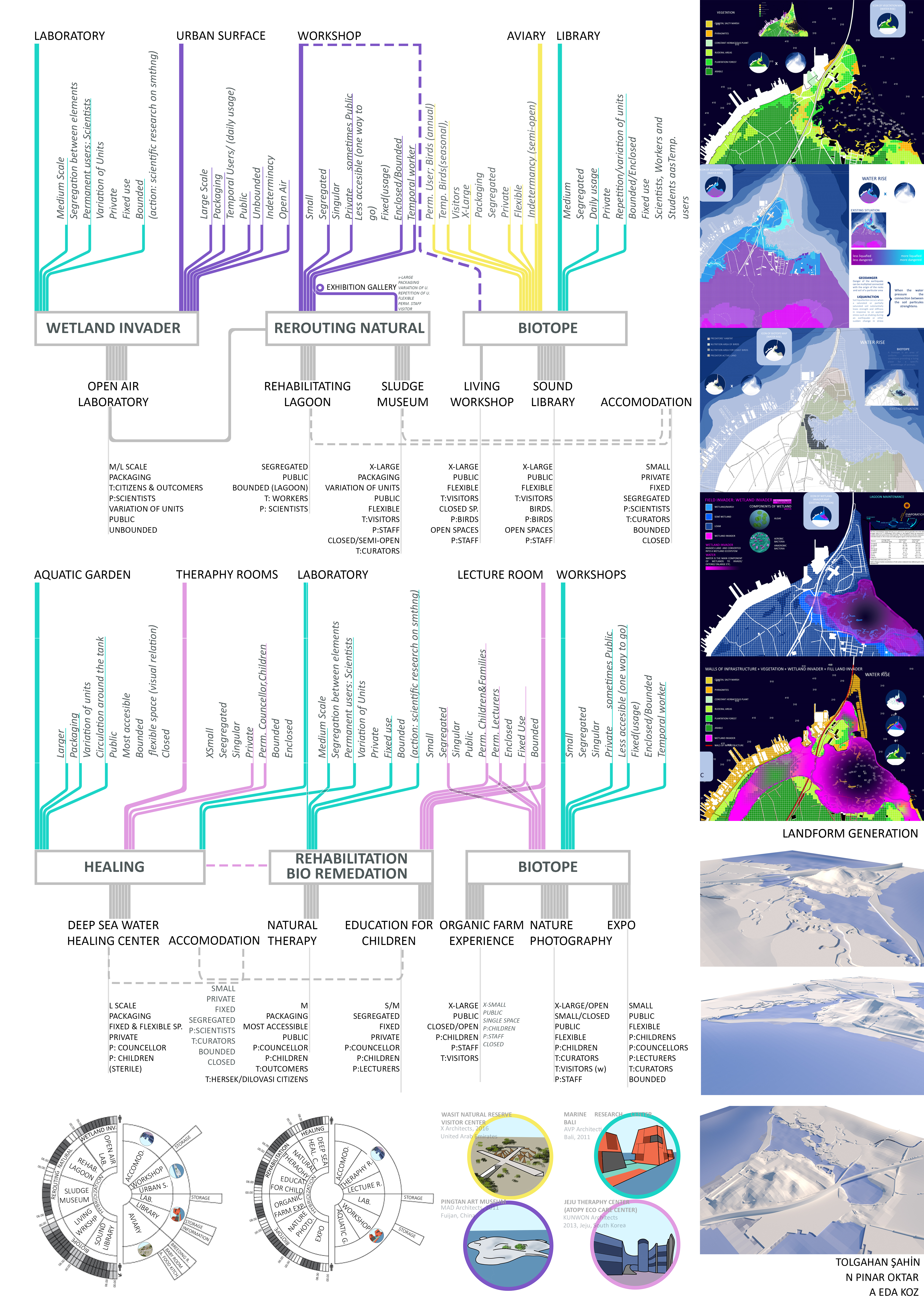With reference to our analysis on the historical and urban setting of İzmit, we pointed out the strong impact of water infrastructure on the city’s urban fabric. Back then, İzmit was known as Nicomedia as the capital of Roman Empire. The aqueducts spatial and organizational characteristics was a starting point for us, that we had interpreted in our design. This made it possible to solve the problem of accessibility to waterfront, as well as increasing the experience throughout our project site. The aqueduct typologies and interpretations enhanced permeability in x-y-z coordinates. Thereafter, we used the potential of ‘’waterscape’’, Kumla Stream, which is the most dominant one, as an initiator. Since water is one of the most effectful force in ecological resilience/robustness, combining the historical and ecological background of the site made it possible to develop an assemblage of ‘’Resilient Singularities’’.
The terminology that we introduce as ‘’Resilient Singularities’’ has roots coming from the nature of ecological systems. The ‘’Assemblage’’ of Resilient Singularities behavior against damages especially caused by anthropocentric acts, is defined as their resilience. Together with our architectural design the program elements will increase the ecological resilience while regenerating the existing condition in the site. Moreover, our strategy was to develop a holistic formation and integrate it with scapes (water, air, earth, sun). Together with the ideology of designing a compact, low carbon footprinted and ecological concept of design that locates itself at definite at our strategical zones, we decided to re-arrange the western side of the landscape. The importance of this condition is that at the particular area the stream meets the Izmit Gulf(which is a fertile delta formation, however became a brownfield due to the anthropocentric acts), so we had revitalized the defined zone and offer a scenario of the reformation of wetland characteristics.
In that sense, we pointed out singularities, potentials and possibilities of the site. we took Bernard Tschumi’s Manhattan Transcripts: The Tower as a starting point to develop sequential analysis of the site. We analyze the site with frames and strip formation, which are linear elements to point out different potentials and relationships between singularities.
We started with abstraction of the context as MOVEMENT-SPACE-EVENTS, which refers movement as circulation and pedestrian access, spaces as scapes; softscape, hardscape, waterscape, events as collaboration, ecologic, biologic and hydrologic events.
We juxtaposed categories to analyse sequences within the frame, each frame refers different sequences to understand the contex and potentials inbetween Kumla stream and Urban context.
So, we decided possibilities of aqueducts, it may starts the change. Using the potential of aqueducts may rearrange the possibilities of singularities.


























































































































































































